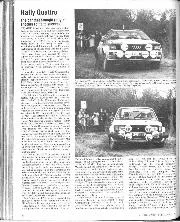
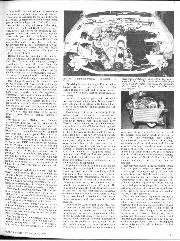
Rally Quattro
The car that brought rallying another route to success Because four-wheel drive was such a dead duck in the racing world and had already been tried and found wanting commercially…
Turns out that an 18-year career spanning 306 grand prix starts, 15 victories, 1235 title points and a world championship also gives you plenty of prime material for future books.
Jenson Button’s latest offering isn’t your usual run-of-the-mill autobiography, plotting his career trajectory from the Formula Ford Festival to Brawn GP and everything in between. This work draws on almost every aspect of Button’s life in and around Formula 1, often leaning toward how not to do things rather than being a straightforward and predictable user’s guide.
Therefore, the title – ‘How to be an F1 Driver’ – is rather misleading. Instead, the book is about highlighting the pitfalls of being suddenly world-famous and the stupid things that seemed like such a good idea to a young man with money to burn. It’s about arguments with your engineers, playing nicely (or otherwise) with sponsors, travelling the world with your life in just your hand luggage and coping with the stresses and strains of the sport outside the cockpit as well as within it.
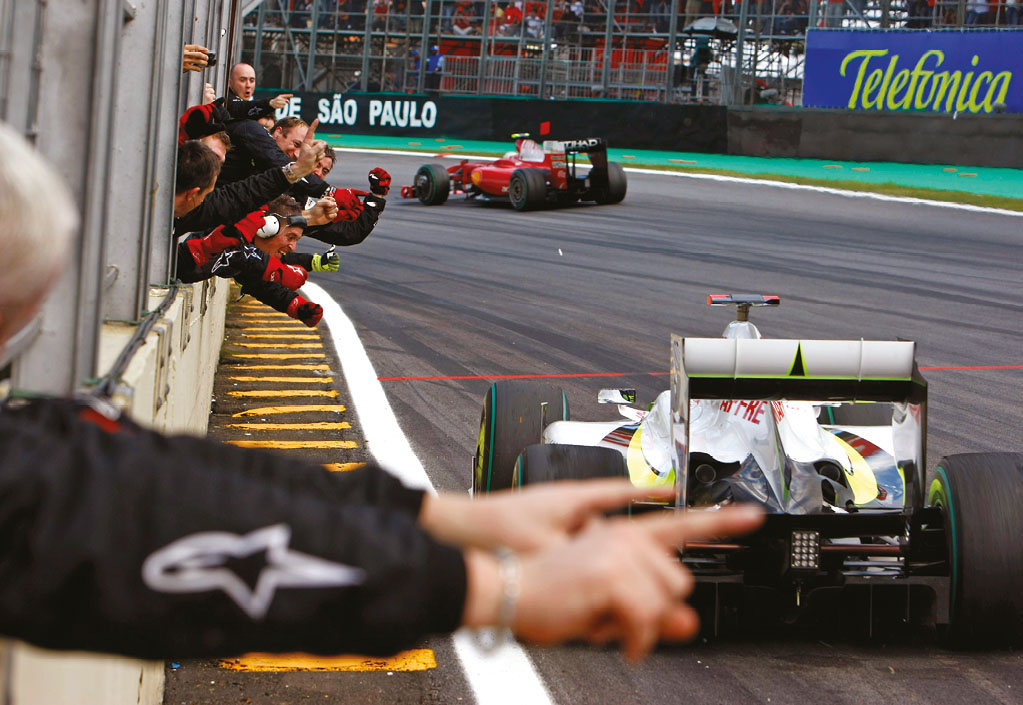
Following on from 2017’s more formulaic Life to the Limit – Button’s straight-edged autobiography – this book takes an entirely different direction. Whereas the first book covered the predictable stuff, this second work feels more like Button unchained. You can tell that certain binding contracts have lapsed, sponsorship agreements are settled, and Button is finally free to say pretty much whatever he likes. That freedom leads to a spree of factual information and data, but delivered with an accessible and casual style that conveys the character of the cheerful, self-effacing Jenson we all know.
“If you’re going to create something that people actually want to read, then it has to come from the heart, and it has to resemble who you are and what you do. It has to mean something,” Button says when I ask about what makes this title stand out from his first.
“It was much more difficult to write than the first book. That was simply my life and career, and the story wrote itself. I had a much wider spread of topics with this book.
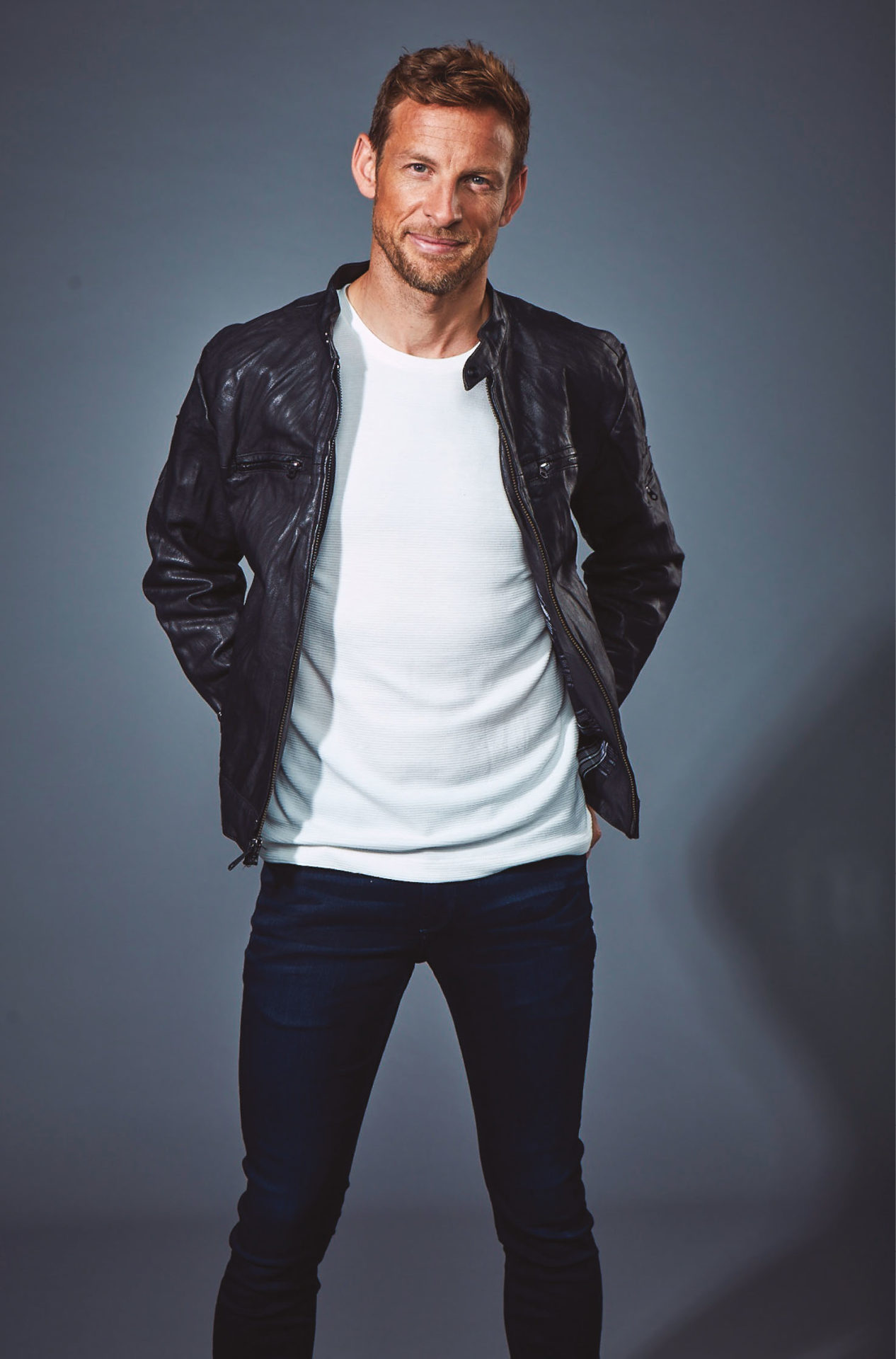
“The book had to be accessible and enjoyable, first and foremost. When you look at some F1 books out there they can be pretty heavy going and you do wonder how many people will have the drive to stick through them until the end. I didn’t want a dry, technical book like that. I thought back about my career, and it turns out that I’ve done some really stupid things where I look back and wonder what the hell I was thinking. I think we all have those moments where current you looks back at younger you and wonders what you were thinking and how you should have done things differently. It’s very personal, and going back through old photos was a very therapeutic process.
“I felt there was a lot of information that people hadn’t read, but at the same time it couldn’t be boring. I had to put my twist on it, which is why it perhaps reads a bit more like a chat down the pub. The first book was purely about my life, but this one is about life in F1, the small details behind the scenes that the fans don’t get to see or hear about because the questions are so rarely asked about how a car actually feels through a corner, or how the balance shifts. I do go fairly in-depth with the technical stuff and the actual driving process of an F1 car. The title might make it sounds like it’s a book for kids looking to work their way up the racing ladder, but it goes a lot deeper than that.”
“It paints a different side to the man who was always so calm in an otherwise turbulent paddock”
And one for the kids it certainly isn’t. This is a book for those who want to see a different side of both F1 and Jenson Button. There are no startling revelations about his rivals, teams or contractual disputes, but instead there are surprises of a different sort. There are many colourful and often very funny private anecdotes – such as the crazy financial logistics of trying to save on hotels by owning a luxury motorhome, yet still having to fork out for somebody to drive it to and from tracks and then pay for them to stay in said hotels instead, which rather negates the point. Or the perils of buying a yacht that’s almost twice your salary. But around those run a series of more uncomfortable truths.
Button opens up about his own anxieties, out-of-body experiences, how he suffered panic attacks and dealt with crippling anxiety early in his career that would leave him confined to his hotel room instead of testing. It paints a very different side to the man who always remained a bastion of calm within an otherwise turbulent paddock.

“Those elements may surprise some, because they’re not things that F1 drivers talk about,” Button adds. “But so many people do struggle with anxiety and mental health and I had to deal with those sorts of things during my career, too. I’ve turned up to races thinking ‘Why am I doing this?’ It’s crazy what your mind can put you through. I wondered about whether to include them, but ultimately I felt they were important because it could help anybody in a similar situation to know that it’s a normal reaction, and we all have our moments. It’s comforting to know it’s not just you.”
Even shortly before his 2017 Monaco comeback to deputise for Fernando Alonso, Button had second thoughts.
“There was genuinely that moment where I wondered if I really did have to drive an F1 car again,” he says. “Being out of the car doesn’t help, especially when things have moved on technology-wise. I wouldn’t say I was nervous, but there was definitely that sense of ‘do I really have to do this? Can’t somebody else do it?’ but it’s hilarious how quickly it all comes back. Much like any of these things with anxiety, once you force yourself to do something the adrenaline kicks in and you remember why you love doing it. I was laughing my head off after two laps in that McLaren…”
If there was one criticism that could be levelled at his first book, it was that the elements you really wanted to know about – such as the tempestuous McLaren-Honda rebirth – weren’t covered in detail. This isn’t an issue here. Button has been far more liberal with advice, criticism and opinion. He wades into 12-hour drinking benders in Monaco, reveals amusing clashes with team members, openly criticises V6 engines and DRS and talks about how his post-F1 career has rejuvenated his love for the sport.

“In F1, you do feel limited in what you can say – like the young drivers now who can find it very difficult to know how many truths or opinions they can share,” he adds. “Post-F1 I’ve definitely been able to relax, but I think the whole sport is becoming more open. There’s the [Netflix] series that shows the drivers’ personalities more. I definitively felt more at ease to write some sections due to the way the sport is headed.”
“They told me not to stay too close to anyone as my car could lose downforce and take off…”
Chapters on Le Mans 24 Hours and Super GT, from which he has just retired, bring the book up to date, and there’s even an insight into his forthcoming Baja 1000 off-road outing alongside long-time friend Chris Buncombe.
“Le Mans was a real eye-opener for a few reasons,” Button says. “First, I hadn’t really been in the car before the race, and it was the same car that had backflipped at Spa in the previous race. Then they told me not to stay within two lengths of the car in front as it might lose downforce and it could happen again! So you think ‘Oh, OK… s**t!’ and it doesn’t inspire much confidence. The car was also very pointy, which made it a handful down the Mulsanne, which is a road with a centre line that cambers downward to the outside for drainage. Each time you crossed that centre line the car would pull to one direction, which was quite unsettling. But I loved the experience. It was stressful, but wonderful as the atmosphere is amazing. I will definitely be back, but first I have the Baja to look forward to.
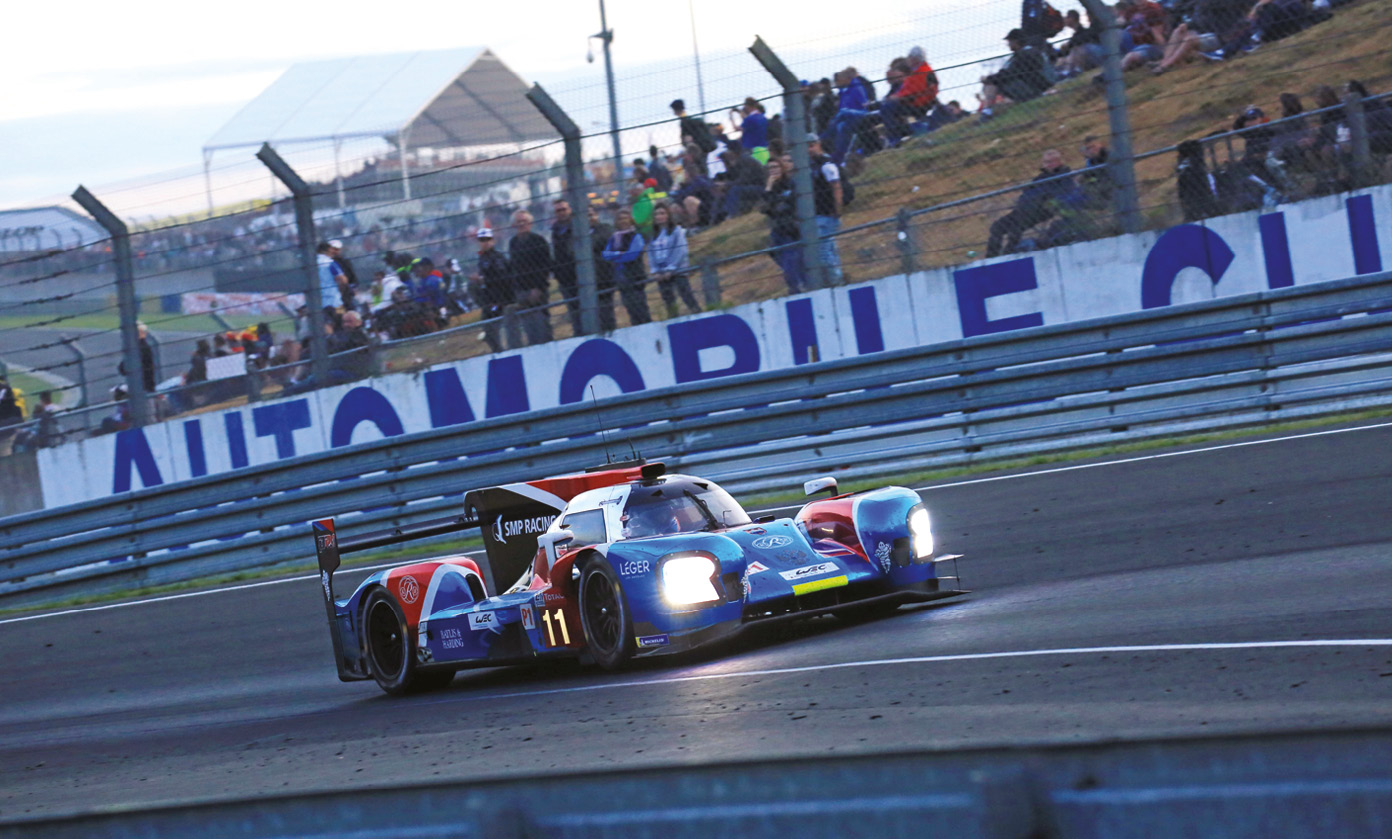
“Off-road racing is a different world. They’re crazy – they drive flat-out in the dust, and you can hardly see your own hands! Mentally I cannot do that, and that’s great because I’m learning new things. If you’re doing something and not learning from it, then what’s the point in doing it? That’s one of the messages I wanted to get out most from this book. You have to keep learning and wanting to improve and better yourself. It’s an information book more than anything. To give fans a better understanding of what we do and what we go through both in and out of an F1 car.”
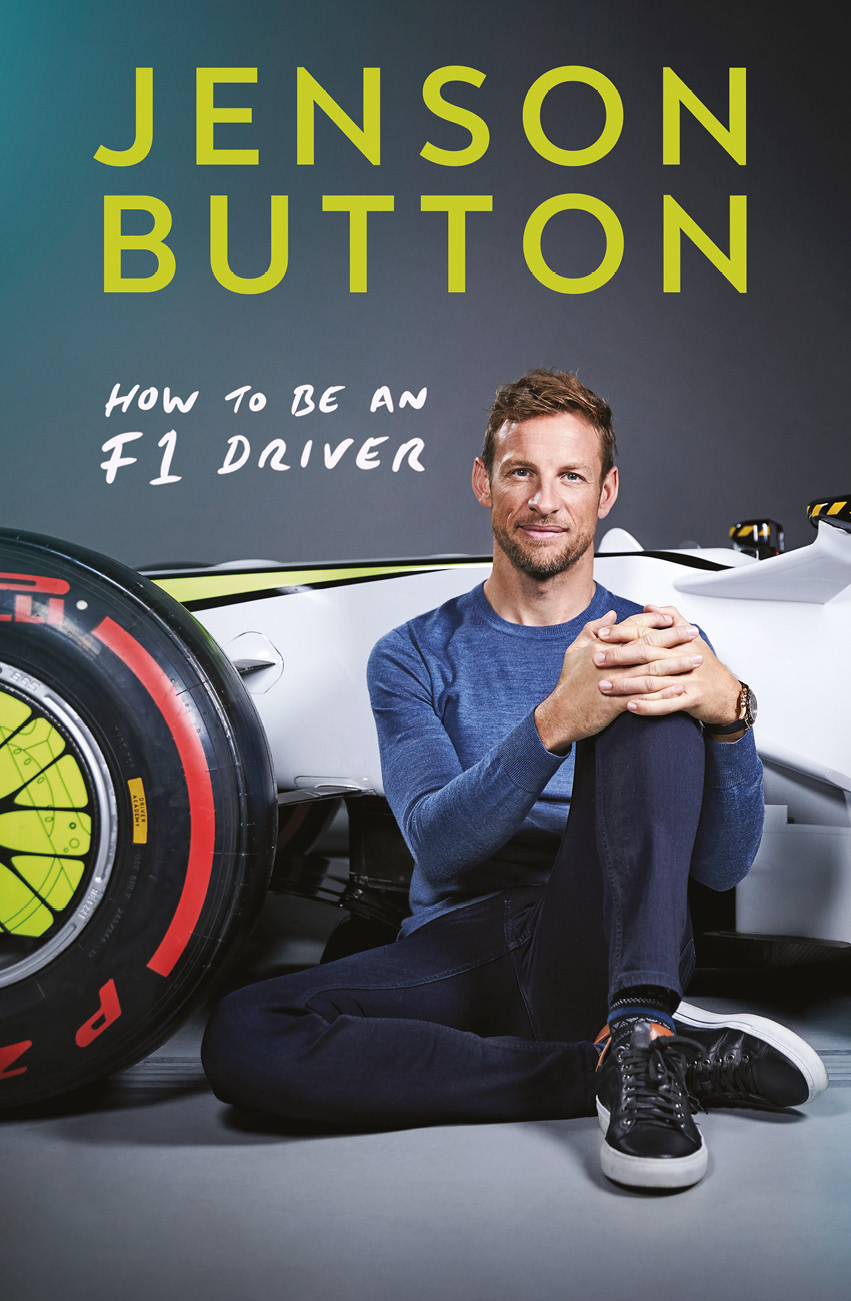
How to be an F1 Driver
by Jenson Button
is available now in
all good retailers.
Blink Publishing, £20
ISBN 978-1-788-702-61-4